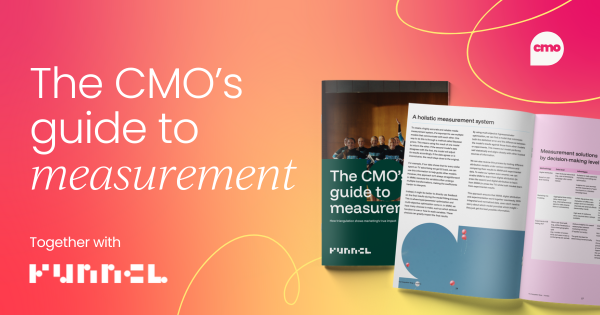Scaling a marketing operations function is never simply a case of adding headcount or investing in new software.
It requires a thoughtful blend of process, technology, and talent that works not just in one market, but across multiple regions, business units, and compliance environments.
For organizations that operate globally or across complex internal structures, getting this right can determine whether marketing is perceived as a strategic driver or just a service function.
Years of experience in marketing operations leadership roles reveal three core truths:
- Scaling starts with understanding the current state,
- It succeeds through alignment with organizational priorities, and
- It depends on making value visible to stakeholders.
Here's what Harjeet Singh, Sr Director Marketing and Demand Gen Operations at Finastra, Danielle Balestra, Director of Marketing Technology and Operations at Goodwin, and Nadya Koleva, Expo 2025 Operations Director have to say about this topic.
Starting small and scaling smart
A successful scale-up begins with a clear-eyed assessment of how the organization operates today. That means looking at how the business goes to market, how teams are structured, and what tools are in place – and then asking whether those tools and structures are fit for the future.
When approaching a new role, Danielle Balestra begins by assessing whether the current configuration is built to scale. She examines the team’s skills, the level of automation already in place, and where investment in talent or technology could have the most immediate impact.
From there, she creates a plan for leadership that highlights specific gaps and explains how closing them will help the business meet its objectives.
This method works even when the starting point is fragmented. Harjeet Singh stepped into a marketing operations function that covered only part of its five core pillars. Roles and responsibilities were scattered, with no central coordination.
His advantage was the presence of a center of excellence in Manila, which took on reporting, budget management, and personal data processes. Over time, that team’s scope expanded to support regional marketing efforts across Asia-Pacific, Europe, the Middle East, and North America.
When Finastra shifted from a regional to a business-unit-based marketing model, marketing operations stayed centralized under corporate marketing. This decision allowed Harjeet’s team to maintain consistent processes while serving all business units equally.
The creation of a second center of excellence in Bucharest further strengthened support for EMEA and North America.
In another context, Nadya Koleva focused on getting thirteen separate verticals to “speak the same language.” She introduced monthly and quarterly business reviews with the CEO, tied to clear KPIs and supported by visual dashboards.
Her internal marketing operations team remained lean (just three people) but was backed by an outsourced 17-person data team. This combination of in-house oversight and external execution allowed for centralized reporting and more consistent performance measurement.

Challenges of scaling marketing operations across borders
Scaling marketing operations comes with familiar hurdles. One persistent tension is the balance between urgent, tactical requests and longer-term strategic initiatives.
Danielle's team is often asked to turn around campaigns and sales promotions at short notice. While necessary, these tasks can push aside the strategic projects that would make marketing more efficient in the long run.
Gaining buy-in for those longer-term initiatives means showing stakeholders exactly how they will reduce firefighting later.
Data quality and accessibility are another shared challenge. At Goodwin, Danielle navigates different data privacy rules across the firm’s offices in Germany, Luxembourg, London, and the United States, each of which affects how outbound marketing can be executed.
Nadya faced even stricter regulations in Saudi Arabia, where data residency laws not only required local storage but also imposed penalties for non-compliance. To meet this requirement, she negotiated with vendors such as Adobe and Salesforce to ensure their platforms were hosted inside the country.
Talent constraints can also slow scaling efforts. In a previous role, Nadya’s location (remote, with limited amenities and no option for remote work) made recruitment difficult. The only viable option was to outsource critical, highly skilled work to top-tier consultancies like McKinsey, PwC, and Publicis, enabling the team to keep pace with business demands.
Technology sprawl is another common obstacle. At Finastra, Harjeet inherited a patchwork of tools and systems, including some purchased on personal credit cards.
Consolidating them into a single, standardized tech stack required auditing for overlaps and persuading teams to move away from their preferred individual tools in favor of a unified approach.

Aligning with organizational goals
For marketing operations to have maximum impact, it must stay closely aligned with the organization’s top priorities, which inevitably evolve over time.
One year the focus might be on growth, the next on customer retention, and another on improving customer experience or reducing churn.
At Expo 2025, Nadya refreshes her marketing strategy every three years and uses a “strategy success office” to track how well the previous plan was executed. This disciplined approach keeps the team accountable and ensures new initiatives are rooted in clear performance insights.
At Goodwin, Danielle applied alignment principles to solve a cross-functional challenge in event management. Multiple teams, including marketing technology, events, and client development, were using separate processes for large-scale events.
By introducing a single event management platform that met everyone’s needs, she improved efficiency without increasing headcount. Demand for the tool quickly spread to other departments, illustrating how solutions born in marketing operations can have enterprise-wide impact.
At Finastra, Harjeet maintains alignment through disciplined budgeting. He divides the marketing operations budget into two categories: one for ongoing operational costs like subscriptions and data acquisition, and another (roughly 20%) for strategic projects directly tied to the year’s objectives.
In one instance, that meant investing in customer experience measurement; in another, it supported expansion into new geographic markets.
Demonstrating and communicating value
Delivering results is only part of the job; making sure stakeholders understand the value being created is equally important.
Danielle believes in bringing stakeholders into projects from the start and guiding them through the process so they can see the benefits firsthand. She recalls participating in a two-day workshop with investment bankers who were initially skeptical of marketing’s role.
By the end, they had become strong advocates after seeing how marketing could help them achieve their goals.
Nadya takes a different approach, focusing on self-service access to data. By creating dashboards and integrating AI-powered summaries, she ensures stakeholders can retrieve and interpret information on their own.
This increases transparency and makes meetings more productive, as discussions can move directly to decision-making.
Harjeet emphasizes tailoring communication to the audience. Some stakeholders respond to activity metrics, others to ROI in financial terms, and others to measures like pipeline contribution. Speaking their language makes it easier to gain support for new initiatives and investments.
Making AI work for marketing operations
AI is finding its way into marketing operations, but successful adoption depends on readiness.
Danielle has implemented Microsoft Copilot in Goodwin’s CRM and email marketing tools but is holding off on broader AI deployment until the underlying data quality is improved. Without clean data, she says, AI’s outputs won’t be reliable.
Nadya has seen both success and failure with AI tools. A generative AI platform for paid media copy looked promising on paper, producing targeted, platform-specific content.
However, the organization’s approval workflows couldn’t keep up with the volume of content generated, and without integration into the martech stack, the material went unused.
On the other hand, she’s found strong value in Google Vertex AI, which enables her team to ask natural-language questions of their datasets and instantly generate dashboards.
She’s also enthusiastic about Fireflies, a meeting assistant that transcribes discussions, analyzes sentiment, summarizes action points, and even notes who spoke the most. For a team handling numerous multilingual meetings, this capability has been transformative.

Building for continuous improvement
Scaling marketing operations is not a single project but an ongoing cycle of refinement. Structures, tools, and priorities shift as the organization evolves, and marketing operations must adapt in step.
For Harjeet, that means keeping budgets aligned with top-level objectives and ensuring every investment is backed by a clear business case. For Danielle, it’s about eliminating inefficiencies and demonstrating value in ways stakeholders can immediately understand. For Nadya, it’s about making data and insights so accessible that conversations focus on the “what next” rather than the “what happened.”
The organizations that succeed in scaling marketing operations are those that start with a thorough understanding of their current state, invest in data quality, align tightly with business priorities, and communicate their value consistently.
As AI matures and automation becomes more advanced, these foundations will determine which teams can fully capitalize on the opportunities ahead, and which will be held back by the same challenges they’ve always faced.
If you want to know how the best marketers are driving marketing efficiency, sign up to our Marketing Operations Summit in Boston, where you’ll connect with your peers and industry leaders, learn to use AI to its full potential, and more.







.png)









 Follow us on LinkedIn
Follow us on LinkedIn








